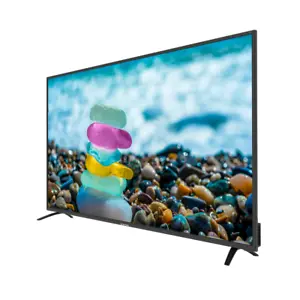
Television technology has come a long way from the days of bulky cathode-ray tube (CRT) sets. Today, consumers have a plethora of choices when it comes to television types, each offering distinct features and benefits. In this article, we’ll explore the top five different types of television sets, highlighting their unique characteristics to help you make an informed decision for your home entertainment needs.
- LED/LCD TVs
Features: LED (Light Emitting Diode) and LCD (Liquid Crystal Display) TVs are among the most common types of televisions on the market. They use liquid crystals to control the passage of light through the screen. LED TVs, in particular, use LEDs to provide the backlighting.
Benefits: LED/LCD TVs are known for their affordability, energy efficiency, and slim designs. They offer bright and vibrant displays, making them suitable for well-lit rooms. Many come with advanced features like Smart TV capabilities and high refresh rates for smooth motion.
- OLED TVs
Features: OLED (Organic Light Emitting Diode) TVs are renowned for their stunning picture quality. Unlike LED/LCD TVs, OLED TVs don’t require a backlight. Each pixel emits its own light, resulting in perfect black levels, vibrant colors, and superior contrast.
Benefits: OLED TVs offer unparalleled picture quality and wide viewing angles. They are incredibly thin and often have sleek designs. Gamers and movie enthusiasts appreciate their fast response times and excellent motion handling.
- QLED TVs
Features: QLED (Quantum Dot Light Emitting Diode) TVs are another popular choice, known for their vivid colors and brightness. They utilize quantum dots to enhance color accuracy and improve brightness levels.
Benefits: QLED TVs are known for their vibrant and realistic colors, making them ideal for HDR (High Dynamic Range) content. They excel in well-lit rooms and offer excellent gaming performance. Many QLED models feature advanced technologies like variable refresh rates for gaming enthusiasts.
- Plasma TVs (Phased Out)
Features: Plasma TVs were once popular for their superior black levels and color accuracy. They used small cells containing gases to create images when excited by electrical current. However, they are now largely phased out of the market.
Benefits: Plasma TVs provided excellent contrast and color accuracy, making them suitable for home theater setups. They had wide viewing angles and minimal motion blur.
- CRT TVs (Phased Out)
Features: CRT TVs, or cathode-ray tube televisions, were the standard for decades. They used electron beams to create images on a phosphorescent screen. However, they are now largely obsolete.
Benefits: CRT TVs were known for their durability and affordability during their prime. They offered good picture quality for their time but were bulky and heavy.
Choosing the right television for your home involves considering various factors, including your budget, room lighting, viewing habits, and desired features. LED/LCD, OLED, and QLED TVs are the top contenders in today’s market, each with its unique advantages. While CRT and plasma TVs have largely been phased out, they played significant roles in the evolution of television technology.
Ultimately, the best television type for you depends on your individual preferences and requirements. Whether you prioritize picture quality, gaming performance, energy efficiency, or a balance of these factors, there’s a TV type that suits your needs. So, explore your options, compare specifications, and find the perfect television set to enhance your home entertainment experience.